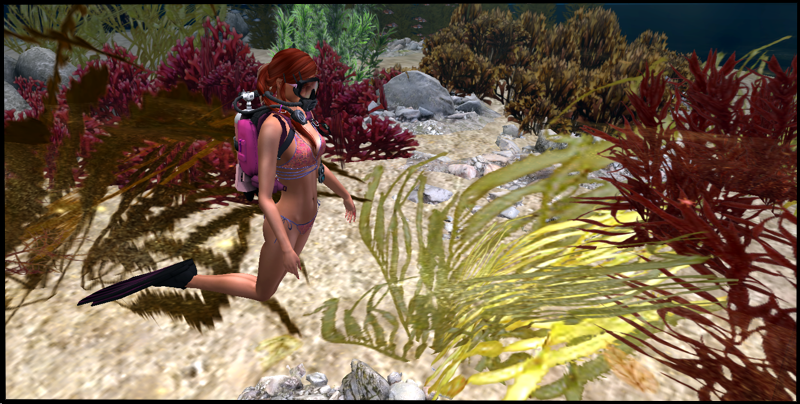
When I was a kid, I had a mild case of iron deficiency anemia, e.g., not enough iron to build red blood cells. My mother gave me an odd looking and tasting supplement that solved the problem. Along with people, animals can be deficient in iron too. Question: Can the oceans have iron deficiency anemia? Read on to find out.
Back when I was in college, I knew a guy who owned a Triumph TR-3 sports car. It had cut-away doors and he could stub out his cigarette on the street while seated at the wheel. He was known to have said, “The world is my ashtray.”
Humanity, at large, has assumed that the world was so large that any actions a few people took would never have any lasting effect on the planet. Like my cigarette stubbing friend of long ago, that’s not true anymore.
Humanity has made significant changes on the planet and a lot of them are working against us. Climate change is a fact. It’s not can humanity effect the world, it is how can we reverse the effects? It turns out that the oceans hold a number of possible solutions.
The big thing about climate change is carbon dioxide in the air. Increased levels of CO2 make the planet warmer by capturing the warmth of the sun under the atmosphere. As the planet gets warmer the polar ice caps melt and the sea level rises. This causes flooding and ultimately the abandonment of coastal cities. Now, this will not happen quickly. I live on a hill in Texas that is 1,000 feet above sea level. It will take a lot of melted ice before I own beachfront property. First, the Gulf Coast cities of Houston and Corpus Christi and will be under water.
This warming also causes the permafrost in northern latitudes to melt releasing previously captured CO2. Northern areas only support limited plant life, called tundra, due to the cold, thin soils, lack of minerals and short Summers. “Tundra is one of the biggest carbon dioxide sinks on Earth. In other words, the biomass (organic matter, both plant and animal), which is biodegradable, takes more carbon dioxide than it gives back to the atmosphere when it decomposes.” (Bozek-Andryszczak, 2017) As permafrost melts it releases the CO2 that has been captured in the tundra soils. The melting tundra also releases methane (CH4) which adds to the problem. “Tundra soils appear to be acting as an amplifier of climate change,” said Steve Wofsy, a Harvard atmospheric scientist. “We need to carefully monitor what it’s doing up there, even late in the year when everything looks frozen and dormant.” (Gray, 2017)
Back to iron deficiency anemia.
“As crazy as it might sound, geoengineering the oceans by adding iron — in effect, fertilizing them — may offer the best, most effective and most affordable way not just to slow the march of global warming but to reverse its course by directly drawing carbon out of the atmosphere… This geoengineering would in many ways replicate a natural process that has been underway for probably billions of years. Here’s how it works: Iron-rich dust blows off the land and into the seas, fertilizing algae and plankton. The more they grow, the more they convert carbon dioxide in the air to organic carbon, some of which eventually sinks to the watery depths.” (Preston, Bushnell & Michaels, 2023) See the addenda at the end regarding some limitations to stimulating plant growth in the oceans.

Another way to increase CO2 capturing plants is to restore the tidal areas where ocean meets land and human development has torn out the plants and built houses roads, and the other trappings of civilization. “Restoring seagrass is one tool that coastal communities can use to address climate change, both by capturing emissions and mitigating their effects.” (Schlossberg, 2023) Restoring grasses is a huge job and requires many resources, but it is possible.
You may ask, “What can I do?” The last article in the references below is a good starting place.
References
- What is Arctic Tundra Doing With Carbon Dioxide?, Dagmara Bozek-Andryszczak, Edu-Arctic, 2017.
- Alaska tundra source of early-winter carbon emissions, Ellen Gray, NASA Earth Science News, 2017.
- Iron Dust Could Reverse the Course of Climate Change, John T. Preston, Dennis Bushnell and Anthony Michaels, New York Times, September 14, 2023
- Implications of large-scale iron fertilization of the oceans, Philip W. Boyd, M. K. Orbach and Michael H. Huesemann, Marine Ecology Progress Series, July 2008.
- Developing a test-bed for robust research governance of geoengineering: the contribution of ocean iron biogeochemistry, P. W. Boyd and M. Bressac, Philos Trans A Math Phys Eng Sci, November 2016 (Erratum in: Philos Trans A Math Phys Eng Sci, March 2017).
- A Powerful Climate Solution Just Below the Ocean’s Surface, Tatiana Schlossberg, New York Times, May 24, 2023.
- Some easy (or mostly easy) life changes that have a big impact on the world’s oceans, Martha Shade, CNN, September 16, 2023.
- Deepy is looking at seagrasses on Delia Lake’s installation at STEM Island.
Addenda – Delia Lake (In RL, Linda Kelley) sent me these comments in regard to adding iron to the oceans: “While it’s true that fertilizing algae and plankton, whether it’s with iron, nitrogen, or phosphorus, or all of them, will spur growth, that’s not an unmitigated good. When the blooms die off and eventually sink, the decomposition process sucks oxygen out of the oceans, particularly the coastal areas around the world. These eutrophication zones are coastal dead zones where many marine species die each spring and summer season, in effect suffocating from lack of oxygen in the water. It’s not only oceans that are affected but lakes and rivers as well.”
Globally consistent assessment of coastal eutrophication, Elígio de Raús Maúre et al, Nature Communications, 2021.
 |
| Visits: 8 |
